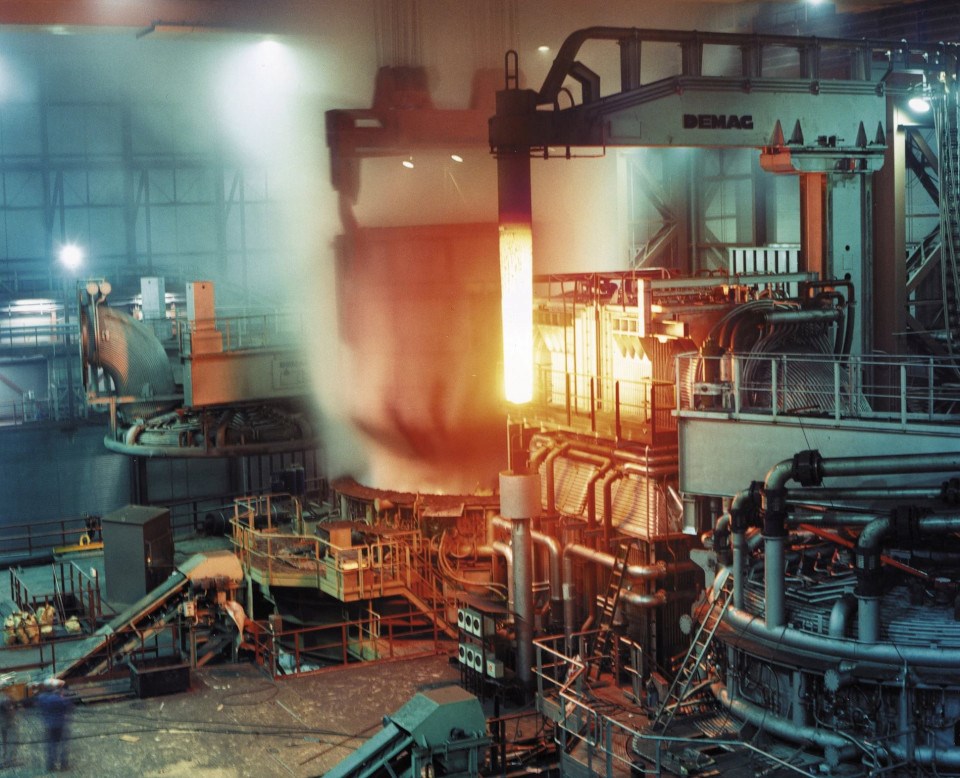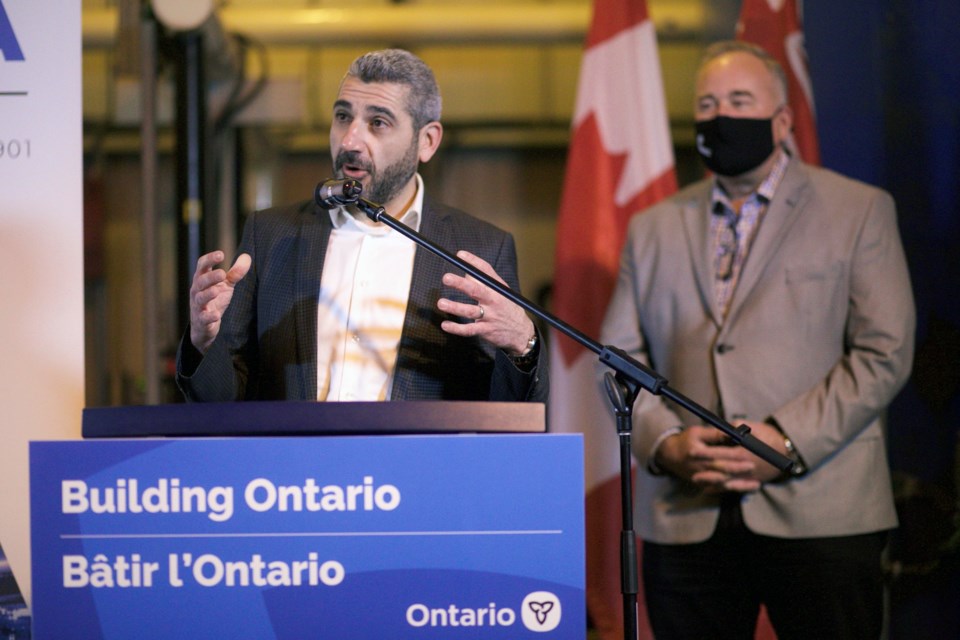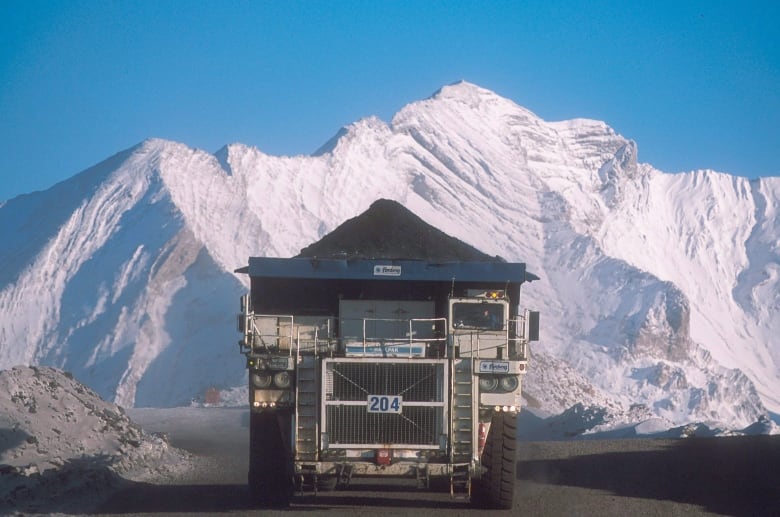When operational in 2024, transformative technology will cut Sault steelmaker's greenhouse emissions by 70 per cent
Nov 11, 2021 10:00 AM By: Northern Ontario Business Staff

Algoma Steel's board of directors have given the go-ahead to begin construction of two electric-arc furnaces.
This is a $700-million investment and will transform the way the Sault Ste. Marie steel producer makes its plate and sheet in eventually shifting from burning coal through its existing blast furnace and basic oxygen operations to electric furnace production.
It will cut the 120-year-old company's carbon emissons by 70-per cent, the company said in a news release, placing this project among Canada's highest impact investments in terms of cutting greenhouse gas emissions.
Algoma anticipates a 30-month construction phase.
Once the furnaces are commissioned it will give Algoma an annual raw steel production of 3.7 million tons, enough to match its downstream finishing capacity.
The company said these improvements also include a new vacuum degassing capacity. This is a treatment used to reduce the dissolve gas content - like hydrogen, oxygen, nitrogen - of the steel to enhance its capacities. Algoma said this will expand itss offering of steel plate grades.
“We believe that today’s strategic decision to transition Algoma to electric arc steelmaking represents a win for all of our stakeholders," said Algoma CEO Michael McQuade in a statement.
"It is designed to transform Algoma into a more agile and profitable company, positioned for long-term growth as an economic driver and employer of choice in our community."
“The board’s decision recognizes that Algoma’s sustainability and Canada’s path to net zero carbon emissions are aligned. You cannot get to net zero without steel, and in becoming a leading provider of green steel in North America, Algoma intends to be part of the solution.”
Andrew Harshaw, Algoma's board chair called the decision the result of two years' worth of "hard work and decisive actions."
“As a board, we have a duty to carefully evaluate investments that may benefit long-term growth and create value. We believe that we have done so and are confident about the significant benefits that this transformation is expected to bring for the Company and its stakeholders. I congratulate Mike and the whole Algoma team for arriving at this exciting milestone.”
The steelmaker said it is engaging with employees, community leaders, suppliers, and union representatives, while also partnering with regional academia to provide new skills training to Algoma’s current employees and to build new careers for local youth in science, technology, engineering and mathematics (STEM) subjects and the trades for future advanced manufacturing jobs.
No provincial commitment has been made toward the project, but Romano told SooToday announcements are coming.
The provincial government is trumpeting the recent announcement by Algoma Steel's board of directors to officially go ahead with a $700-million investment in electric arc steelmaking and Sault Ste. Marie’s MPP says that decision could lead to a return of economic prosperity for Northern Ontario.
On Thursday, Algoma Steel announced its board had approved a plan to replace the existing blast furnace with two new state-of-the-art electric-arc-furnaces (EAFs) at an expected cost of $700 million.
On Friday, four provincial cabinet ministers held a press conference at Algoma Energy, the former Lake Superior Power Plant.
Sault Ste. Marie MPP Ross Romano recounted the ‘good times’ at the steel plant before its first bankruptcy and restructuring. His father, grandfather and two uncles were among the 12,000 people working at the plant in those days.
“If you lived in or around Sault Ste. Marie at that time you either worked at Algoma Steel, you were related to somebody who worked at Algoma Steel, at a minimum you knew someone who worked at Algoma Steel. Back then things were very good for Algoma Steel and very good for Sault Ste. Marie, too,” said Romano.
By the time he turned 12 fortunes had turned for the company.
“By the time I started my first year of high school in 1993, Algoma Steel was going through its first bankruptcy restructuring proceedings,” said Romano. “That would be the first of three such proceedings in as many decades. Things in Sault Ste. Marie and all of Northern Ontario had taken a serious decline.”
Romano said the announcement that the company will move ahead with the $700 million investment is good news for the city and for Northern Ontario.
“This demonstrates that Algoma Steel, which has been our largest employer for several generations and supported thousands of workers and their families throughout this time, can continue to be here for several generations more,” said Romano. “This demonstrates that Algoma is healthy again, this demonstrates that our economy can become healthy again and as our economy in Sault Ste. Marie and across all of Northern Ontario becomes healthy again, so to can our communities have a chance at becoming healthy again.”
He said other contributions by the provincial government, like securing the pensions of almost 9,000 steelworkers and a $60 million investment in 2019, led to the conditions that made this newest project possible.
Michael McQuade , CEO of Algoma Steel, said the $700 investment in electric arc steelmaking will be transformational for the company.
“To be in a position to unlock electric arc steelmaking means we will be able to sustain advanced manufacturing in our community, offering a bright future with high-quality jobs for generations to come,” said McQuade.
The company has already begun working with local academic institutions to train current and future generations of steelworkers, like the recently announced Bachelor of Engineering – Mechatronics degree program at Sault College in partnership with Humber College.
McQuade said future generations will look back at the $700-million investment in electric arc technology as a pivotal moment for the company.
“This is a massive win. It’s a win for Algoma Steel, a win for our employees and for our community, for Ontario and for Canada,” said McQuade.
Ontario’s Minister of Energy Todd Smith joined Romano in person at the press conference on Friday, while ministers Greg Rickford and Vic Fedeli appeared by video conference.
In July, the federal government announced a $420 million investment in the project. No provincial commitment has yet been made toward the project, but Romano told SooToday more announcements are coming.
Smith told SooToday the provincial government was waiting until the company made a final decision on the project to make sure it was going ahead.
“The federal government made their $420 million investment earlier this year, but there hadn’t been a decision made by the company to go ahead with this project,” said Smith. “There were a number of different things that were brought to our cabinet table at Queens Park that we had to deal with just to make sure there was the certainty here and in Ontario to make this kind of investment.”
Smith said the plant’s conversion to electric arc technology will reduce CO2 emissions by 3 million tons, having an equivalent effect to taking one million cars off the road.
“It’s enormous. When you think of the heavy lifting Algoma is going to be doing as a result of this investment in the arc furnace when it comes to greenhouse gas emissions for the province — one move like that gets us 16 per cent closer to achieving the targets we set out for Ontario in the Paris Accord for 2030 to meet those targets,” he said.


















